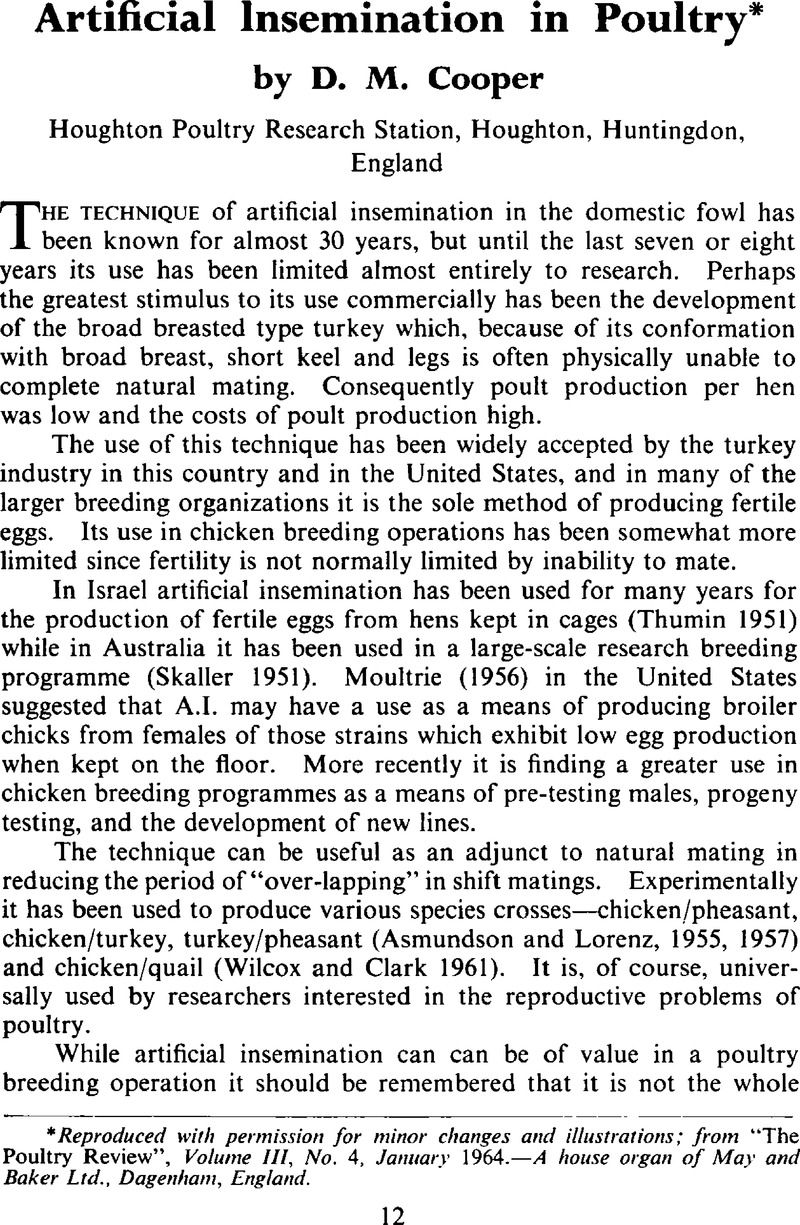Crossref Citations
This article has been cited by the following publications. This list is generated based on data provided by Crossref.
Holzmann, A.
Hager, G.
Vasicek, Lore
Baumann‐Kopera, Eva
and
Rothmund‐Burgwall, T.
1981.
Spermatologische, histologische und klinische Untersuchungen von Hühnerherden mit schlechten Befruchtungsergebnissen.
Zentralblatt für Veterinärmedizin Reihe A,
Vol. 28,
Issue. 8,
p.
628.
SHINDO, Junji
and
YOSHIDA, Naoyuki
2001.
Annual Changes in Semen Volume, sperm concentration in Humboldt Penguin (<i>Spheniscus humboldti</i>).
Japanese Journal of Zoo and Wildlife Medicine,
Vol. 6,
Issue. 1,
p.
23.
Mohan, J.
Sharma, S.K.
Kolluri, G.
and
Dhama, K.
2018.
History of artificial insemination in poultry, its components and significance.
World's Poultry Science Journal,
Vol. 74,
Issue. 3,
p.
475.
Hakimi, Farhad
Karimi Torshizi, Mohamad Amir
Hezavehei, Maryam
and
Sharafi, Mohsen
2024.
Protective Effect of N-Acetylcysteine on Rooster Semen Cryopreservation.
Biopreservation and Biobanking,





